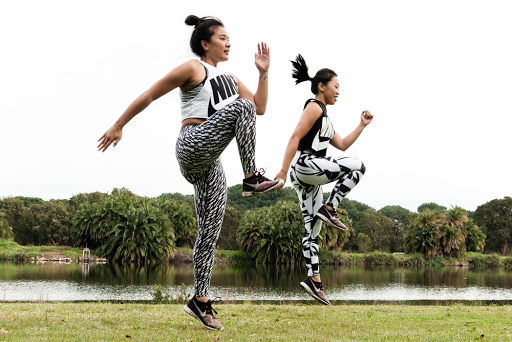Learn these quick tips to help you get rid of your pain when running no matter what the cause. These concepts are simple, but not easy. It will take some adjustment on your part, but it’s worth the investment.
Find shoes that work well with your feet
Footwear is a primary reason many people develop foot issues during their lifetime. Many factors go into this including heel height, shoe width, and level of cushion. Most shoes have heels that are higher than the back of the foot which contributes to shortening of the posterior, lower leg muscles. This happens gradually over time, but considering most of us have been wearing shoes the majority of the time since we were young, it is an extremely common occurrence.
The loss of flexibility in these muscles contributes to abnormal gait (walking) patterns and limits your ability to properly disperse forces throughout the foot and ankle when squatting or running. Similar to the padded heel, shoes that are too narrow can also negatively impact the shape and function of the foot over time. The wider the front of the foot, the better you are able to grasp the ground for balance and disperse forces across a wider surface area.
Next time you try on a pair of shoes, take out the shoe liner and stand with your foot on top of it; if any part of your toes hangs over the liner it is too small for you and will not give your feet adequate room to spread naturally. Having extra cushioning on the bottom of your shoes can be helpful if you run on hard surfaces or do trail running. There are many brands that have a nice amount of cushion while also not elevating the heel.Adding in foot strengthening exercises will also help to buffer some of these forces and make your feet more resilient. Transitioning to minimal footwear should be taken gradually to allow your body to adapt to new movement patterns.
Dynamic warm-up
It is important to perform some kind of a warmup before running to reduce your risk of injury. This is not the time to get into a stretch and hold it for a period of time. Static has not been shown to prevent injuries and if stretches are held for a long period prior to activity they may reduce your power output and decrease performance.
The most important part of a warmup is raising your core body temperature to prepare for activity and taking joints through their full range of motion to increase blood flow. This can be accomplished by simply performing a couple light movements before you begin. Movements like squats, lunges, and various dynamic stretches and should take no more than 5-10 minutes. Part of this could even involve just beginning your run with a fast walk or running with a much slower pace than you plan on running for the session until your body temperature is up.

Just move more
Movement variability is a key theme with any kind of orthopedic issue and running is no different. Any time you spend too long in a position, you will be stressing certain soft tissue and musculature while others become inactive. Your body will adapt to the positions and forces it spends the most time in. If you spend a lot of time sitting in front of a computer you tend to adopt that “slouched” posture.
Spending too much time sitting or in restrictive, poorly designed footwear can result in tightening of the muscles in the back of the lower legs over time and lead to improper mechanics when walking and running. The more you can switch positions throughout the course of the day, the better your body will be able to distribute forces and maintain healthy levels of flexibility.

Just because you run 30 minutes a day or even an hour a few times per week, if you are sedentary the rest of the time this will significantly impact your ability to heal from any injuries and have a negative overall impact on your health. Movement snacks throughout the day will help with circulation and overall help with inflammation and avoidance of muscles “shutting off.”


